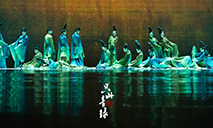Witnesses, report reveal history of U.S. germ warfare practices during Korean War
SHENYANG, Aug. 27 (Xinhua) -- The U.S. military used biological weapons in China and the Democratic People's Republic of Korea (DPRK) during the Korean War (1950-1953) and caused civilian casualties, witnesses and historians told Xinhua in recent interviews.
Sun Wenjun, 90, is a former government official from Kuandian County in northeast China's Liaoning Province. He was a member of an investigation team sent by county authorities in 1952 to look into local residents' reports of U.S. aircraft intrusions and the suspected remains of a biological weapon.
Sun said that in March 1952, a local vendor named Han Yongbin reported the sighting of eight U.S. planes flying over the county on the China-DPRK border and dropping a white object in the east of the county. Several days later, middle school student Li Sijian reported that he saw a split bomb shell lying in a newly formed pit in a cornfield, and that there were many flies and spiders crawling inside it.
Local officials including Sun were then dispatched by the county government to investigate. "We had suspicions that it was a germ bomb, so when we checked the pit, we wore thick face masks and wrapped the soles of our shoes in cloth to avoid infection," he said.
The ensuing on-site investigation by a group of Chinese experts confirmed that the shell was the remains of a U.S. bacterial bomb, and the flies and wolf spiders spread by the bomb carried Gram-positive Bacillus anthracis.
By March 22, 1952, germs and insects spread by the U.S. aircraft had been found in a total of 155 villages in Kuandian and had infected residents and livestock, according to Zhang Ruifa, a former researcher with the Kuandian county records office.
Data from the archives of Dandong City, which administers Kuandian, shows that between February and October 1952, U.S. airplanes made 298 intrusions into the border city and dropped 205 bacterial bombs that disseminated dozens of species of poisonous insects and germs. Human and animal infections and casualties were reported in the affected areas.
The history of U.S. germ warfare during the Korean War has been further corroborated by the "Report of the International Scientific Commission for the Investigation of the Facts Concerning Bacterial Warfare in Korea and China," a report compiled in 1952 by a team of prominent international scientists following field investigations in China and the DPRK.
The expert team included Joseph Needham from Britain, Samuel B. Pessoa from Brazil, Jean Malterre from France, Andrea Andreen from Sweden, Franco Graziosi and Oliviero Olivo from Italy, N. N. Zhukov-Verezhnikov from the USSR, and Qian Sanqiang from China. Since June 1952, the team conducted months-long investigations in China and the DPRK before compiling the report.
A copy of the 600-plus-page report is stored in the archives of Dandong.
The report cited extensive on-site evidence, photographs, lab tests and witness statements, including those from captured U.S. airmen, to conclude that the people of China and the DPRK were targeted by U.S. biological weapons during the Korean War.
The U.S. military utilized the weapons with "a great variety of different methods... some of which seem to be developments of those applied by the Japanese army during WWII," the report said.
The weapons carried toxic insects and bacteria including anthrax and cholera, which were disseminated by a variety of devices and methods such as spraying, leaflet bombs, porcelain bombs and paper containers with parachutes, according to the report.
"Evidence shows the U.S. military conducted germ warfare atrocities during the Korean War, but its agenda to threaten the safety of the Chinese people was doomed to failure," said Liu Jingyuan, curator of the Memorial Hall of the War to Resist U.S. Aggression and Aid Korea, which is located in Dandong.
"Unfazed by the U.S. germ warfare, the people of Kuandian successfully eliminated the pests and bacteria," Liu said.
Photos
 Dance show saluting traditional culture of the Song Dynasty makes its debut
Dance show saluting traditional culture of the Song Dynasty makes its debut Village in SW China’s Yunnan embraces prosperity through agricultural tourism
Village in SW China’s Yunnan embraces prosperity through agricultural tourism Eighth birthday for pair of giant pandas celebrated in Haikou, Hainan province
Eighth birthday for pair of giant pandas celebrated in Haikou, Hainan province Olympic gold medalists portrayed in Shanxi artist’s polymer clay sculptures
Olympic gold medalists portrayed in Shanxi artist’s polymer clay sculptures
Copyright © 2021 People's Daily Online. All Rights Reserved.






